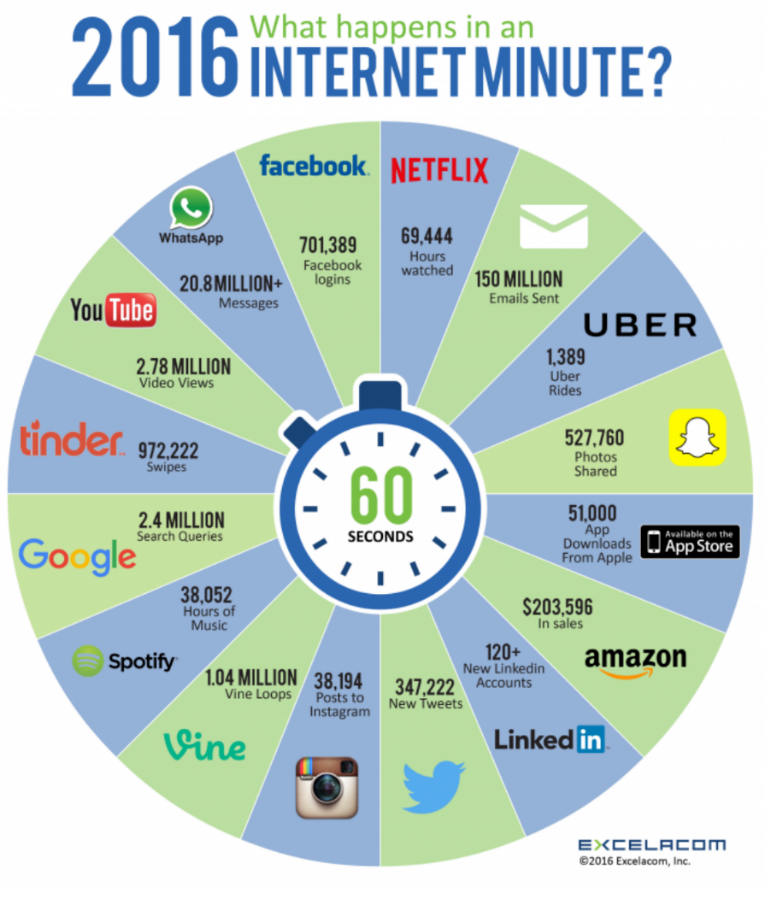
“Social media is the ultimate equalizer. It gives a voice and a platform to anyone willing to engage” – Amy Jo Martin
Providing Context
We all use it; some of us abuse it; some of us do it when we are bored; some of us do it when no one is looking; others do it at the dinner table; heck, I’ve seen couples do it at the dinner table together! Before your imagination runs wild I’m talking about creating and absorbing social media content. Chaffey (2017) details that there were over 2.7 billion active users on social media in January 2017, which is an increase of +21% YoY; businesses naturally want to exploit this audience and reap the benefits; this blog will help you do that with 3 top tips for success, and at the very minimum, will expand your knowledge on social media marketing.
Top Tip #1: Humanisation
When you think of social media you probably think about connecting with loved ones, friends, and friends of friends (don’t act like you haven’t stalked before). You don’t think about businesses connecting with you, aiming to be your friend, posting on your feed with language you similarly would use; humanising their campaigns to emphasise they are your friend, and that you should trust them, and should trust their product; Nielsen (2015) supports this by documenting that the most credible form of advertising is from people we know and trust. Park et al., (2015) goes a step further by conducting a study analysing language used by over 60,000 Facebook users where word clouds were created to show popular words/phrases posted by users with differing personalities (see figure 1).
This should remind you that no one size fits all; write posts in your social media campaign that address as many demographics as possible; from the party goers to the stay at home with pizza types. You can find 9 ways to humanise your brand here. Great examples of social media posts I’ve discovered can be found below.
Top Tip #2: Involvement & Co-creation
We are social animals who thrive off interaction with others. We all have an opinion on something, and enjoy hearing the words “what’s your opinion?”, whether it’s a friend or a stranger, it makes you feel like you are being valued and that your input is respected. Your campaign must engage users and stimulate customers to get involved. This is all too often forgotten as Merlo et al., (2014) suggests that businesses consider customer acquisition to be more critical than customer retention, which is a worry as acquiring a new customer is “25 times more expensive than retaining an existing one” (Gallo, 2014, p29) (think phone providers and how they try to keep your business when your contract is up for renewal, allowing you to barter the price– they know you’ll go to a competitor otherwise). Having said this, some companies are creating a bond with their customers, such as Burberry who permit customers to make design suggestions on their trench coat designs using a customer portal (Gouillart, 2012). Here are other brands who strive to involve and co-create. Remember to involve your customer and actively ask for their feedback in your social media campaigns – your engagement will blossom by doing this.
Top Tip #3: Measurement
With so much content being produced in a single minute, you can understand the perceived difficulty in cutting through the noise on social media and trying to discover relevant conversations that really matter; I present the solution of social media listening to you my friends. Zhang & Vos (2014) defines social media listening as interpreting data submitted by users on social media channels. So the question on your mind is, so what? What does this mean for me and my campaign? Using a tool like Brandwatch Analytics helps you create a granular approach where you can identify conversations globally, nationally, and by town, there is even a sentiment tool which analyses whether a post is positive, neutral or negative towards your firm. This can be hugely beneficial as Kim (2016) details that campaigns can fall into a crisis where a campaign is interpreted negatively by users. In this situation, being aware of the negative conversations allows for damage limitation. A great recent example is the latest Pepsi commercial that encountered intense criticism for trivialising the Black Lives Matter movement, resulting in the advert being pulled within 24 hours of airing.
Remember to listen and react to the conversation; if there are rave reviews on your product – flaunt it; if there are questions regarding quality – react to it. It’s best to deal with issues in the incubation stage like Pepsi did. You can also turn a crisis into a business opportunity like Bimbo did so well; customers in Mexico were complaining that one of their cake products had a flavour in the U.S which was absent in their home nation. As the conversation grew, so did the frustration, leading to the flavour being introduced in Mexico, and so with it came a $580,000 revenue contribution.
There’s One More Thing
Social media listening tools can be multiplied tenfold by employing predictive analytics that computes a vast amount of data, which is then filtered, and then induced into a predictive framework (Kalampokis, Tambouris & Tarabanis, 2013). Now this can get quite technical so I’ll conclude this blog post with a fascinating video from Golbeck (2014), informing you a little more on the power of prediction. I hope these set of ingredients in the form of top tips will have you altering your social media formula (or meth formula – oh come on, I needed to mention the TV show at least once!)
I’ll see you on the social media battlefield.
See you next week.
References
Chaffey, D. (2017). Global Social Media Statistics Summary 2017. [online] Smart Insights. Available at: http://www.smartinsights.com/social-media-marketing/social-media-strategy/new-global-social-media-research/ [Accessed 6 Apr. 2017].
Golbeck, J. (2014). Jennifer Golbeck: The curly fry conundrum: Why social media “likes” say more than you might think.Available at: https://www.youtube.com/watch?v=hgWie9dnssU [Accessed 8 Apr. 2017].
Gouillart, F., 2012. Co-Creation: The Real Social-Media Revolution. Harvard Business Review.
Kalampokis, E., Tambouris, E. and Tarabanis, K., 2013. Understanding the predictive power of social media. Internet Research, 23(5), pp.544-559.
Kim, C.M., 2016. Social Media Campaigns: Strategies for Public Relations and Marketing. Routledge.
Merlo, O., Eisingerich, A.B. and Auh, S., 2014. Why customer participation matters. MIT Sloan Management Review, 55(2), p.81.
Nielsen, (2015). GLOBAL TRUST IN ADVERTISING. [online] Nielsen. Available at: https://www.nielsen.com/content/dam/nielsenglobal/apac/docs/reports/2015/nielsen-global-trust-in-advertising-report-september-2015.pdf [Accessed 6 Apr. 2017].
Park, G., Schwartz, H.A., Eichstaedt, J.C., Kern, M.L., Kosinski, M., Stillwell, D.J., Ungar, L.H. and Seligman, M.E., 2015. Automatic personality assessment through social media language. Journal of personality and social psychology, 108(6), p.934.
Schweidel, D.A. and Moe, W.W., 2014. Listening in on social media: a joint model of sentiment and venue format choice. Journal of Marketing Research, 51(4), pp.387-402.
Zhang, B. and Vos, M., 2014. Social media monitoring: aims, methods, and challenges for international companies. Corporate Communications: An International Journal, 19(4), pp.371-383.





Wow! What a post! Loved your play on words.
It’s fascinating to see how much actually happens in an internet minute! Your three top tips are ones I’ll be referring back to time and time again.
It’s weird how the internet can be both a blessing and a curse – it’s weird to think how Bimbo turned a crisis into a business opportunity so easily!
Fantastic topic to write about, especially in this digital day and age! We are, indeed, all social animals.